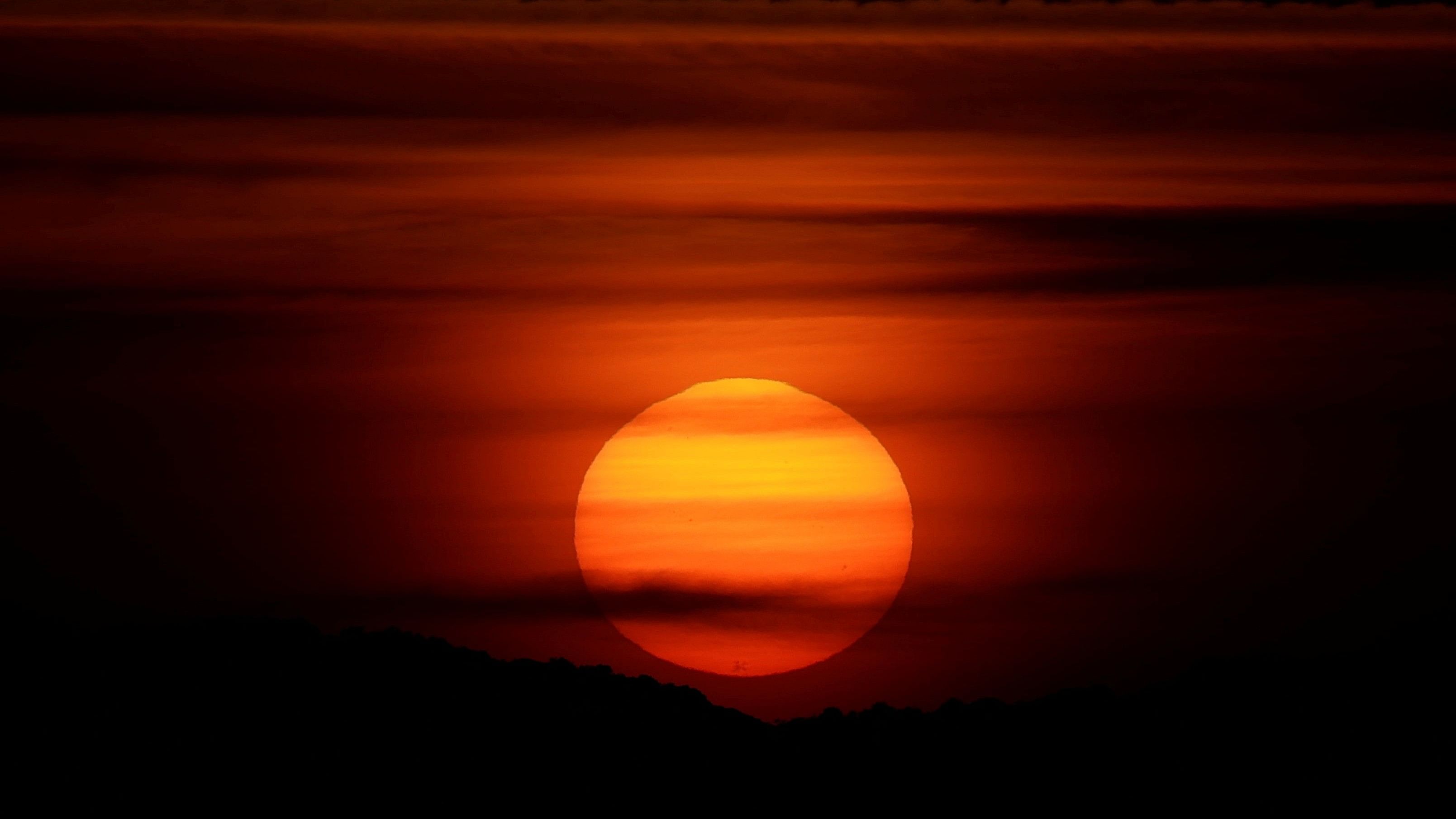
The sun sets over the mountains, as a geomagnetic storm continues hitting the Earth, in Ronda, Spain, May 12, 2024.
Credit: Reuters
Within ten days of the soft landing on the moon, the Indian Space Research Organisation (ISRO), in India’s first solar mission, blasted off the Aditya L1 spacecraft atop the Polar Satellite Launch Vehicle on September 2, 2023, from Sriharikota.
India’s first solar mission, Aditya L1, took 125 days to reach its orbit around Lagrange’s point L1 in space—an imaginary point between Earth and Sun nearly 1.5 million km away from Earth (1% of the total distance between Earth and Sun—150 million km).
L1 is a location in space where the gravitational forces of two celestial bodies (the Sun and Earth) are in equilibrium, and the spacecraft requires minimum energy to move in the orbit. The main advantage of launching at L1 is an uninterrupted view of the Sun 24x7. The spacecraft’s mission is to life orbiting around L1 in an irregularly shaped orbit in a plane roughly perpendicular to the line joining the Earth and Sun.
The physics of the three bodies—the Earth, Sun, and spacecraft—is understood from the Earth’s revolution around the Sun and its rotation on its axis. The Sun also rotates on its axis. The angular speed of spacecraft Aditya L1 is synchronised with the Earth’s rotation. While revolving in a halo orbit, it looks stationary from the Earth and is set to complete one revolution around the Sun in 365 days like Earth.
Point L1 also moves in space concerning the rotation and revolution of the Earth. The net attractive force experienced by Aditya L1 is the Sun’s gravitational pull minus the Earth’s gravitational pull, which will equal the centripetal force on the spacecraft.
Exploring the Sun
The Sun, a 4.6 billion-year-old thermonuclear furnace in its middle age, is the source of all life forms on Earth. In the 17th century, Galileo Galilei was the first to watch the Sun directly from his telescope, which affected his eyesight.
Later, solar observations were made possible with the discovery of the spectroscope and filter. In the absence of X-rays, gamma rays, and ultraviolet radiation in the Earth’s atmosphere, the observations were restricted to radio waves and the visible regions of the spectrum. Continuous research opened the space age in 1957, and observations were possible across wavelengths of solar radiation.
Aditya L1 has seven scientific instruments (payloads), four of which study the sun’s radiation in all wavelengths for understanding coronal heating, etc. Once in eleven years, a solar flare throws particles and radiations and ejects coronal mass with harmful plasma and magnetic fields. It can endanger human lives in space stations and damage the satellites that assist in power supply, communication, agriculture, weather forecasting, and other economic activities on Earth. It also exposes Astronauts to dangerous doses of radiation.
Aditya L1 has carried a Solar Ultraviolet Imaging Telescope for generating images of solar discs, a Visible Emission Line Coronagraph (VELC) that blocks light from the photosphere and chromosphere and artificially creates solar eclipses, two X-ray spectrometers for studying solar flares, and payloads for sensing the ambient subatomic particles, plasma, and magnetic field.
Diving deep into solar corona
Coronal Mass Ejections (CMEs) are large plasma and magnetic field expulsions from the Sun’s corona. Billions of tonnes of coronal materials and an embedded strong magnetic field are ejected. Space weather is a double-edged sword. While it creates beautiful auroras, it can jeopardise the technology we rely on daily.
Seven solar storms slammed Earth in the second week of May 2024, triggering strong Auroras in several parts of the Earth. Travelling at a staggering speed of 3,000 km per second, slower than the speed of light, a stunning display of Aurora has taken place in several parts of the world, including India.
Ejection speed varies from 250 km per second to 3,000 km per second. Ejections travelling at maximum speed can reach Earth in 15 to 18 hours. The speed of light is 3,00,000 km per second. A slower speed of coronal mass is useful as it gives us more time to prepare ourselves on arrival.
The disturbance in Earth’s magnetic field sends ions towards the poles, colliding with oxygen and nitrogen atoms in Earth’s atmosphere and creating dazzling Aurora lights in the polar region. The phenomenon near the North Pole is known as the Northern Lights, and the Southern Lights near the South Pole.
In recorded history, the first solar flare was observed in February 1755 and lasted until June 1756. This is called Solar Cycle 1, and the current flare is Solar Cycle 25.
Before this geomagnetic storm, the National Oceanic and Atmospheric Administration’s (NOAA) Space Weather Prediction Center had issued a warning for a severe (level 4) storm, the first since 2005. Fortunately, CMEs have not caused any damage to the satellites in geosynchronous orbits and space stations and have not caused any disruption on Earth.
Earth’s power grid and communication have not been affected this time, but future storms may ruin them. Several solar missions from various countries, including India, are engaged in observing and providing data to scientists that can help save Earth from disruption by solar activities.
(The author is a postgraduate in physics and a former Principal Chief Conservator of Forests (Head of Forest Force), Karnataka)